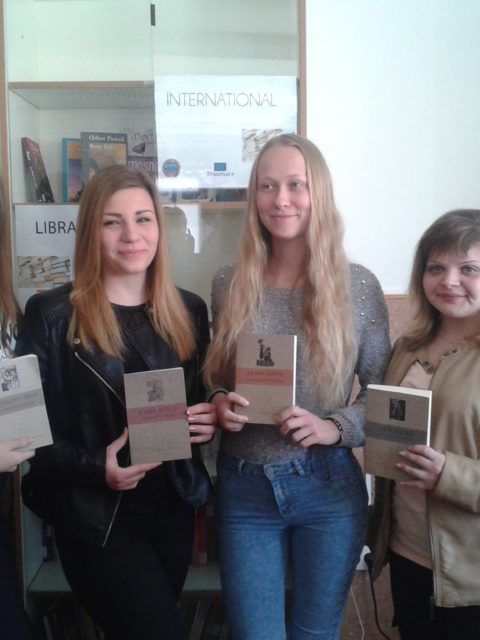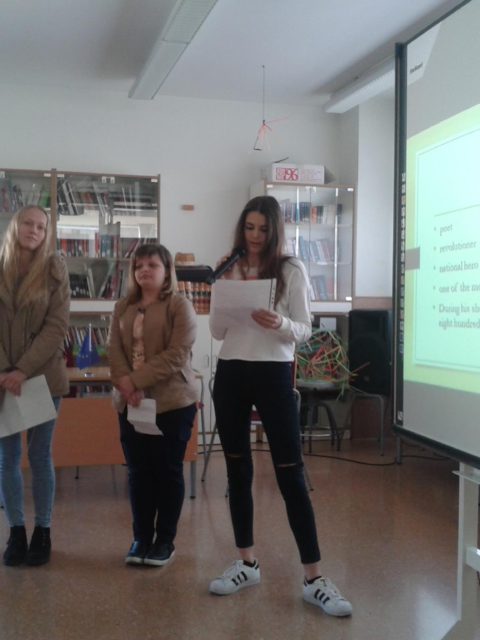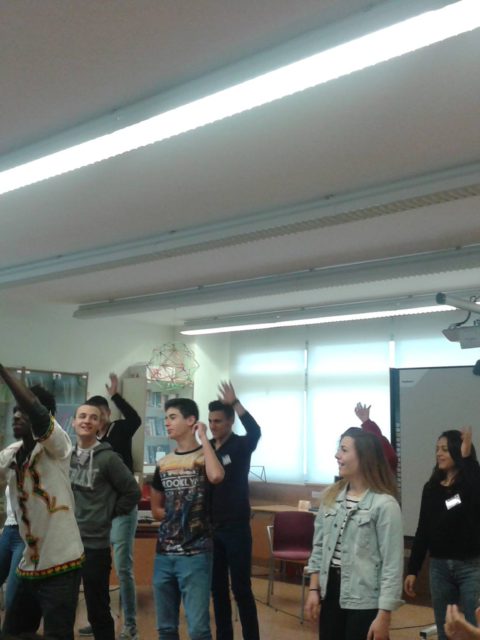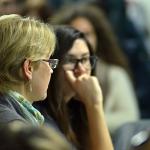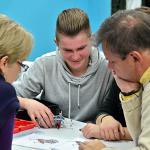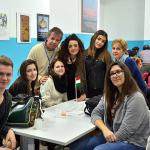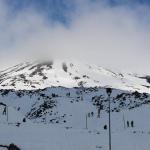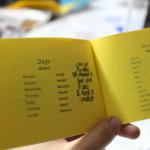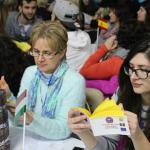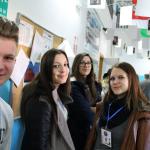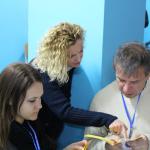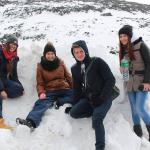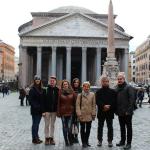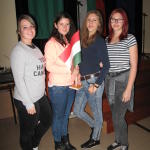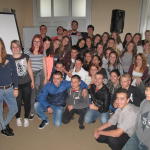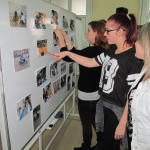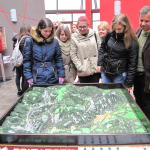Spanyolország – Alicante (2016. március 7.-13.)
A találkozóra 2 tanár és 4 diák utazott. Sajnálatos módon a harmadik tanár röviddel az elindulás előtt lebetegedett, így nem tudott utazni.
A találkozóra készülés során feladatunk volt fotókat és összegzést készíteni saját találkozónkról, melyeket a találkozó előtt, a megbeszélt határidőig eljuttattunk a vendéglátó partnernek. Ezek segítségével a spanyol csapat elkészítette a projektzáró füzetét, melyet a projekt végén mindenki örömmel vett át. Jó volt felidézni a korábbi találkozók emlékeit.
A másik feladat egy video film készítése volt, mellyel be kellett mutatnunk egy, a városunkban vagy környékén tevékenykedő önkéntes munkát folytató személyiséget. Mi a szomszédos város , Gyöngyös „Karitasz” nevű önkéntes szervezetének vezetőjét mutattuk be. Ő és aki munkatársai széleskörű tevékenységükkel sokat tesznek a helyi és környékbéli magányos idősekért és hajléktalanokért. Lehetőségünk volt arra is, hogy találkozzunk spanyol önkéntes szervezetek képviselőivel és egy afrikai migráns fiatal mesélte el történetét és válaszolt a neki feltett kérdésekre.
Projekt feladat volt, hogy vigyünk három könyvet a létrehozandó nemzetközi könyvtárba és prezentációval mutassuk be a könyvek szerzőit illetve a könyvek tartalmát. Diákjaink Ady Endre, Petőfi Sándor és a Nobel-díjas Kertész Imre egy-egy művét választották. Ezek a prezentációk sok új ismeretet adtak a résztvevőknek, lehetőségünk nyílt arra, hogy egymás irodalmi örökségét jobban megismerjük.
A vendéglátók prezentációi segítségével sok információt szereztünk az olasz oktatási rendszerről, társadalmi szervezeteikről és a diákok önkéntes munkavégzéséről. A találkozó résztvevői maguk is aktívan bekapcsolódtak a helyi önkéntes munkába és szemétszedésen vettek részt a tengerparton.
Az spanyol diákok által tartott nyelvleckék megmutatták a helyiek nyelvi sokszínűségét: nemcsak olasz, hanem a valencia-i nyelvvel is ismerkedhettek a résztvevők.
Egy túra során a tengerpart természetvédelmi partszakaszán védett növényeket, fossziliákat és madarakat figyelhettünk meg. A vízi sport tevékenységek nemcsak szórakozást jelentettek, de egyúttal alkalmasak voltak az egészséges életmódra nevelésre is.
A környéken tett kirándulások bővítették a résztvevők történelmi és kulturális ismereteit.
Az spanyol tánc és a zene végig jelen volt a találkozó során és jelentősen hozzájárult a jó hangulathoz. Ez a találkozó méltó befejezése volt kétéves projektünknek.


